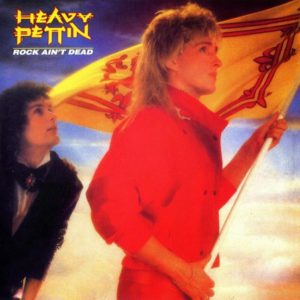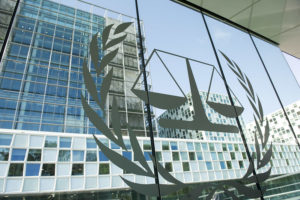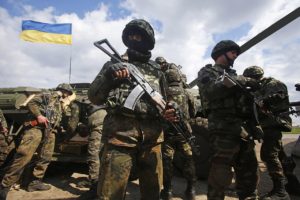The Arctic above 66’ 33’, or North Pole region, features frozen land dotted with shrubs and lichens. Here, the sun sets and rises only once each year. As a consequence, the region has a very particular ecosystem. The ice that forms acts as a cooling lid for the ocean from excessive warming, in effect functioning as the planet’s own air conditioning system. However, it is no secret that the rise in CO2 as well as pollution is causing radical changes to the way the Arctic’s cooling system works. The Arctic has been heating faster than any other region in the planet as “2019 was the second-warmest year on record, with sea temperatures up to 4°C (7.2°F) warmer than usual, and 2020 had the second-lowest sea ice minimum on record.” According to NASA, the 13 lowest sea-ice extents have all occurred in the past 13 years. The reduced accumulation of snow, due to stronger winds, prevents the reflection of 80 to 90 percent of the sun’s light back in space. Moreover, exposed water absorbs all the heat that reaches it. Therefore, as more snow melts, more sea is revealed absorbing more heat and creating a cycle that continuously reinforces itself. Indigenous populations started experiencing this phenomenon in the 1970s, when the weather was uggianaqtuq (behaving strangely). Naturally, this affected their way of life, strictly linked to the delicate environment of the region, making it more difficult to build iglu or hunting. But the changing climate has even more global consequences that cannot be ignored.
The Arctic is encircled by eight countries: Canada, the United States, Denmark (through Greenland), Russia, Sweden, Finland, Iceland and Norway. It hosts four million people, mostly in Russia, that live in outposts for miners and oil and gas workers. The rest of the Arctic population is comprised of Indigenous peoples, such as the Yupik, Inuit, Nenet, Chukchi, Aleut and Saami. There is indeed a wide range of parties involved in the region which naturally leads to conflict. In particular, the Arctic hosts an estimated “30 billion barrels of technically recoverable, undiscovered oil in the U.S. Arctic alone, constituting 13 percent of the world’s remaining oil reserves.” In other words, there is a valuable energetic treasure under the ice that is slowly coming to the surface and obtaining control over those resources would be a substantial gain. But the Arctic also contains “valuable mineral deposits, including some rare minerals critical to making electronics.” It is no surprise then that other non-Arctic states have become more involved in exploring and managing the region. China has been investing heavily in Russian gas projects to secure its future energy supplies and a faster trading route to Europe. Meanwhile, it has been constantly making diplomatic efforts to gain more ground in the policy making of the region. As of today, these efforts have been unsuccessful as the Arctic states have strong policies concerning the involvement of non-Arctic parties in the policy making process of the region. However, as interest grows for the exploration of oil and gas resources, there has been an increase in the number of ships coming to the Arctic for research missions, and oil and commodities transportation. Naturally, this increment of naval traffic has consequences for the environment and is a burden on the already endangered flora and fauna.
On the other hand, because of the competing interests, each Arctic state has initiated programs to enhance their capability to operate militarily in the region. From improved Russian and US submarines, to Canadian and Chinese ice breakers or Norwegian capable ground forces, military operations are gaining more ground. Russia, who has re-opened Soviet-era Arctic military bases,created the Northern Fleet Joint Strategic Command to protect Arctic fishing and shipping as well as oil and natural gas fields in the borders of the Arctic zone of the Russian Federation. Canada has also invested in new patrol ships and a new Arctic training center.Denmark has created an Arctic Response Force. Moreover, the US reactivated its 2nd Fleet, with responsibility for operations in the North Atlantic and Arctic region. Overall, although the risk of conflict is still low and military activity is not excessively confrontational but only preventive, there is an obvious buildup of forces in the region. The Arctic may well become the scene of a new international conflict over the control of resources.
The creation of the Arctic Council has ensured the continuation of “peaceful and stable diplomatic talks despite the rapid changes in the region’s environmental, political, and socio-economic circumstances.” Because of the nature of the Council, no discussion on military security is allowed during talks. Indeed, the Arctic Council has been able to avoid being involved in the recent tensions. The particular nature of the region makes it so that “states have been persuaded to compartmentalize Arctic Council affairs from broader geopolitical matters.” However, the recent Russian invasion of Ukraine is putting this peaceful policy on hold, as members have refused to travel to Russia, which now holds the chair of the Council, for the scheduled meetings. The Council is essential to keep peace in the region but questions are being raised on whether it might be enough to avoid a new Cold War.
The reduction of ice pack and permafrost had substantially impacted the Indigenous Peoples’ way of life. Sea ice is now incredibly unsafe to travel across affecting Indigenous’ ability to hunt and store food. In Nunavut, the ancestral Inuit homeland, “hunting still provides half of peoples’ food so 57 percent of local children currently live in food-insecure homes.” However, until recently, Indigenous Peoples were not given a voice in their government, with no possibility of bringing attention to their conditions. The creation of the Permanent Participant seat at the Arctic Council has led to the valorization of the local perspectives and the promotion of self-determination of these communities. The Arctic Council is then a fundamental institution for the region that manages to keep open the conversation between all Arctic states involved as well as facilitate sharing expertise on environmental change and empower voices of the overlooked communities.
The tensions in the Arctic are undeniable. Although states have demonstrated the desire to avoid moves that could destabilize the region, there is the need for active diplomacy to ensure the situation does not change. The Russo-Ukrainian war and the rapid environmental degradation create uncertainties that could be detrimental for the region, calling for solutions when contacts between militaries will happen. Arctic cooperation “has not always existed, and it is not inevitable.” As escalations rise globally and higher temperatures reveal new possibilities for the Northern Sea Route and Northwest Passage, it is necessary to start considering what the ecological and military future of the region look like. Can resource exploration and sustainability coexist? And will we witness military escalation in the Arctic Ocean? The current political situation taught us to expect the unexpected. Still, diplomacy remains a necessity and the main preventative tool to maintain peace. It is fundamental to cool the Arctic, both ecologically and militarily.






Be First to Comment